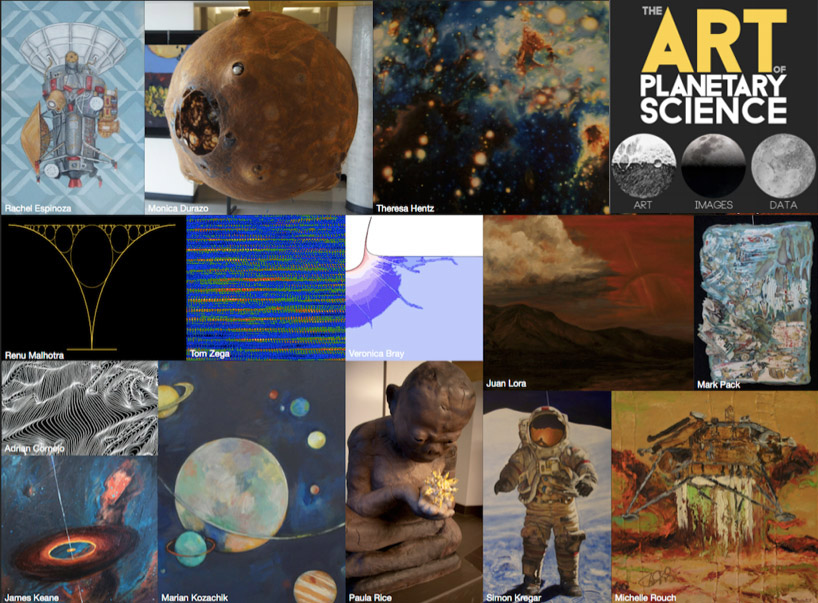October 9, 2024
Art in Planetary Science
Originally published May 14, 2014

image from Molaro and Keane (2014)
The recognition of scientists as artists is not very well appreciated. Scientists are considered as people who have a different language of communication which is riddled with complexities. It could range from technical jargon to mathematical equations to complicated plots of weird parameters. The truth is that scientists too are just artists. We see beauty in the phenomena around us, get captivated by it (as so many of LPOD readers do looking at the Moon!) and then try to paint a picture of it by diverse means. Some of us just sketch it with a pencil or paint, others capture it with a camera and a telescope, while some use mathematical equations as their colors to recreate what we see. In essence, there is much beauty in science that is largely hidden from public view. Recently, a creative effort to expose this to the public was made at the Lunar and Planetary Laboratory, University of Arizona, through an art exhibition called The Art of Planetary Science. TAPS included displays of art inspired by planetary science alongside "artistic work created from scientific data". The event brought conventional artists and scientists together to celebrate the beauty of science in paintings, prints, photography, sculpture, textiles, glasswork, and film. Splendid display of more than 150 entries by 70 artists was thoroughly enjoyed by an audience of about 300 people. Featured above are samples of the artwork from the exhibition, which was also recently reported at the Lunar and Planetary Science Conference in Houston. Encouraged by the popularity of the event, TAPS 2014 is going to be organized in the fall. Anybody can submit the entries for the exhibition although for the purpose of competition, only artists from southwest will be considered. You can keep track of the activities here including signing up for the mailing list. A similar activity is in operation at Princeton and scientific art work is available online for viewing.
Dhingra, Deepak
Thanks
Jamie Molaro, who led the organization of the TAPS exhibition and also was the lead author on the LPSC abstract, graciously allowed the poster to be used here.
Yesterday's LPOD: A Bump in the Night
Tomorrow's LPOD: Look To the Mountains
COMMENTS?
Register, Log in, and join in the comments.



